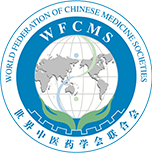Using network pharmacology and molecular docking tools to investigate the potential mechanism of ephedra-gypsum in the treatment of respiratory diseases
Release time: Aug 29,2023
Reading volume: 657
Objective: The objective of this study was to investigate the potential mechanisms of ephedra-gypsum in the treatment of respiratory diseases (RDs) using network pharmacology and molecular docking techniques.
Materials and Methods: The TCMSP and UniProt databases were used to mine the active components and targets of ephedra-gypsum, and the targets of RD were screened using the Online Mendelian Inheritance in Man (OMIM) and GeneCards databases. The protein-protein interaction network graph was created using the drug-disease intersection targets in the STRING database. The network diagram was analyzed using Cytoscape 3.9.1's topology function. The gene ontology (GO) and KEGG enrichment analyses were performed using the DAVID platform. Molecular docking bioactivity validation of the main active components and core targets was performed using AutoDock and PyMOL software.
Results: Twenty-four compounds were screened, and 113 drug-disease targets overlapped. In total, 358 biological processes, 67 molecular functions, 38 cellular components of GO, and 139 pathways were identified. Molecular docking analysis demonstrated the strong binding ability of tumor protein 53 (TP53)-luteolin.
Conclusion: The core components of ephedra-gypsum, such as quercetin, luteolin, kaempferol, and CaSO4·2H2O, act on key targets, such as tumor necrosis factor (TNF), interleukin-6 (IL-6), TP53, and IL-1 β through cytokine-mediated signaling pathways, inflammatory responses, cell proliferation, and apoptosis. This could be useful for the treatment of RD.
Materials and Methods: The TCMSP and UniProt databases were used to mine the active components and targets of ephedra-gypsum, and the targets of RD were screened using the Online Mendelian Inheritance in Man (OMIM) and GeneCards databases. The protein-protein interaction network graph was created using the drug-disease intersection targets in the STRING database. The network diagram was analyzed using Cytoscape 3.9.1's topology function. The gene ontology (GO) and KEGG enrichment analyses were performed using the DAVID platform. Molecular docking bioactivity validation of the main active components and core targets was performed using AutoDock and PyMOL software.
Results: Twenty-four compounds were screened, and 113 drug-disease targets overlapped. In total, 358 biological processes, 67 molecular functions, 38 cellular components of GO, and 139 pathways were identified. Molecular docking analysis demonstrated the strong binding ability of tumor protein 53 (TP53)-luteolin.
Conclusion: The core components of ephedra-gypsum, such as quercetin, luteolin, kaempferol, and CaSO4·2H2O, act on key targets, such as tumor necrosis factor (TNF), interleukin-6 (IL-6), TP53, and IL-1 β through cytokine-mediated signaling pathways, inflammatory responses, cell proliferation, and apoptosis. This could be useful for the treatment of RD.

